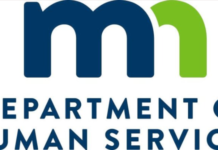To pay for the $1.1 billion stadium, aside from issuing debt, electronic pull tabs were legalized in 2012. These electronic pull tabs brought in only $16 million in 2013, but brought in about $200 million per year by 2017.
Now, a report by the Office of the Legislative Auditor (OLA), a watchdog that helps the state legislature oversee the state bureaucracy, is shedding light on the success of the program thus-far.
The OLA’s report says that the account that the pull tabs feed into—the Vikings stadium reserve account—is expected to reach almost $200 million in the next 4 years.
The initial OLA investigation was triggered by some legislators’ concern that the money was being mismanaged, in the form of $20 million allegedly transferred out of the reserve account. Instead, the stadium reserve account got a clean bill of health. The OLA also said that the state agency in charge of the account, Minnesota Management and Budget, was complying with the law and rules created to govern the reserve account.
It’s important to stress, however, that the $200 million cash pile is based off of projections. Last year, in 2018, the reserve account only had a balance of $44 million, and only by 2023 is the balance expected to reach the $193 million touted by state officials.
The buildup in the reserve account is only because the current sales of electronic pull tabs are exceeding the current obligations of the reserve account, which is mostly debt-service:
Out of the stadium’s $1.1 billion cost, the state covered about $350 million, and the city of Minneapolis covered about $150 million. Right now, the electronic pull tabs revenue covers $30 million in interest from the state’s share of the debt, roughly $15 million in interest for the city’s portion of the debt, and about $10 million each year for the stadium’s operating and capital improvement funds. Less than $5 million also goes to St. Paul sports facilities.
But according to the Star Tribune, the prospect of a larger reserve account is a “tempting pot of cash for legislators.”
Several years ago, Republicans had wanted to use any excess cash for veterans’ homes, but former Governor Mark Dayton preferred to hold onto the funds, and see how the pull tabs would perform in the future. The Minnesota Management and Budget (MMB) agency has also urged restraint.
“I think you know me well enough to know that I like fund balances,” said MMB Commissioner Myron Frans.
That seems wise, given pull tab revenues may be vulnerable to fluctuations in the business cycle, and lawmakers should probably be careful before they spend money they don’t have.
For their part, the Vikings want to refinance the bonds and pay off the building early. But that requires the state saving the incoming reserve account cash for now, as the current bonds have a provision that says they can’t be refinanced (bought back) until 2023. The Vikings organization points out that if the legislature and Governor Walz hold onto the cash and refinance the bonds in 2023, the debt can be paid back in a total of 20 years instead of 30 years. That would save the state about $10 million per year in interest payments.
_______
Donations to Alpha News are 100% tax-deductible. Help us create more content and reach more people

















